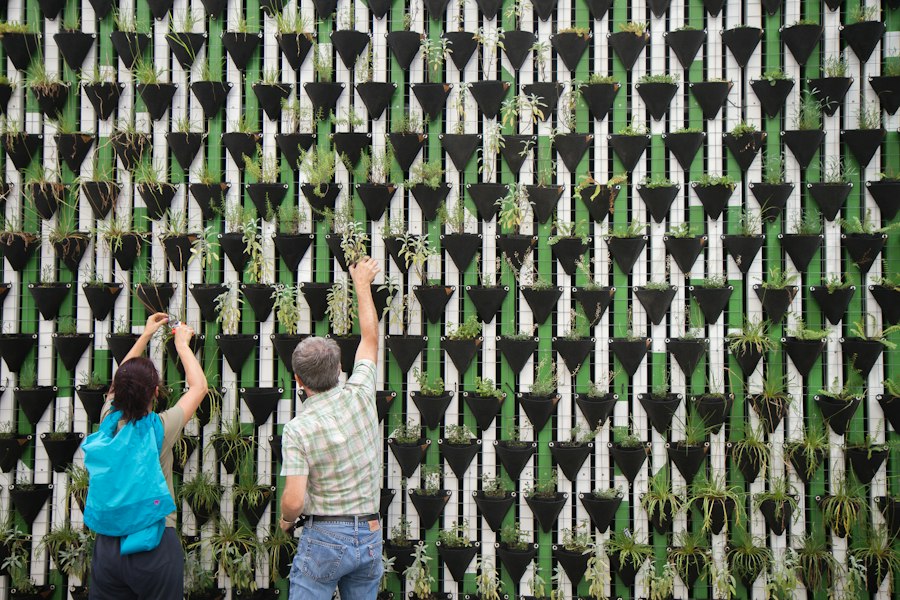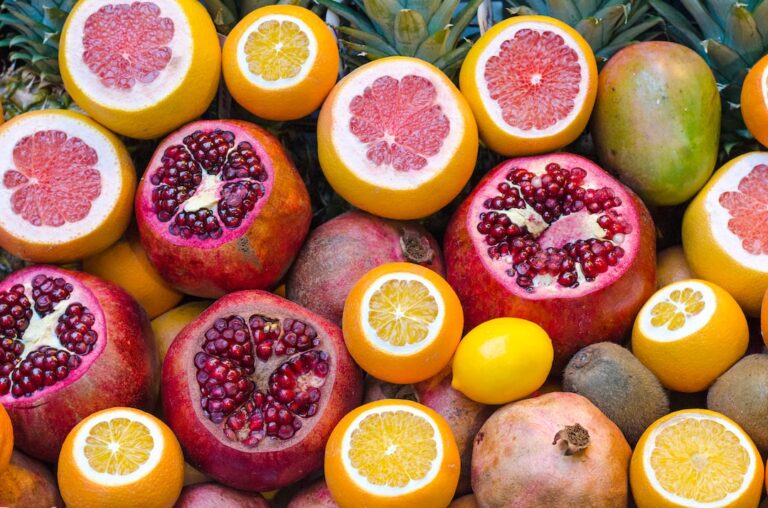Gardening is a popular hobby that brings joy and beauty to many people’s lives. There are various niches within the gardening world, each with its own unique approach and benefits. Understanding these different approaches can help gardeners maximize their space, improve their yields, and create sustainable ecosystems. In this article, we will explore some of the most popular gardening niches and provide tips and examples for each.
Key Takeaways
- There are various approaches to gardening, each with its own benefits and techniques.
- Container gardening is a great way to maximize space and creativity, especially for those with limited outdoor space.
- Raised bed gardening can improve soil quality and yield, making it a popular choice for vegetable gardens.
- Square foot gardening is an efficient and productive way to grow a variety of plants in a small space.
- Hydroponic gardening allows for growing plants without soil, making it a great option for indoor gardening.
Container Gardening
Container gardening is a versatile and accessible form of gardening that involves growing plants in pots or containers instead of directly in the ground. This method is ideal for those with limited space, such as apartment dwellers or those with small yards. Container gardening offers several benefits, including the ability to move plants around to optimize sunlight exposure, easy maintenance, and the ability to grow a wide variety of plants.
To maximize space and creativity in container gardening, it is important to choose the right containers and soil. Opt for containers with drainage holes to prevent waterlogging and use a high-quality potting mix that provides adequate nutrients and drainage. Additionally, consider vertical gardening techniques by using hanging baskets or trellises to grow vining plants such as tomatoes or cucumbers.
Many plants thrive in containers, including herbs like basil, mint, and rosemary; vegetables like lettuce, peppers, and radishes; and flowers like petunias, marigolds, and geraniums. It is important to choose plants that are suitable for the size of the container and the amount of sunlight available.
Raised Bed Gardening
Raised bed gardening involves growing plants in beds that are elevated above ground level. These beds are typically constructed using wood or other materials and filled with a mixture of soil and compost. Raised bed gardening offers several benefits, including improved soil quality, better drainage, and easier access for planting, weeding, and harvesting.
To improve soil quality in raised beds, it is important to use a mixture of high-quality soil and compost. This will provide the plants with the necessary nutrients and help retain moisture. Additionally, consider adding organic matter such as leaves or grass clippings to further enrich the soil.
Raised beds are ideal for growing a wide variety of plants, including vegetables like tomatoes, carrots, and beans; herbs like thyme, oregano, and sage; and flowers like sunflowers, zinnias, and dahlias. It is important to plan the layout of the raised beds to optimize sunlight exposure and ensure that taller plants do not shade out shorter ones.
Square Foot Gardening
| Metrics | Description |
|---|---|
| Yield per square foot | The amount of produce harvested from each square foot of garden space. |
| Number of plants per square foot | The number of plants that can be grown in each square foot of garden space. |
| Water usage | The amount of water needed to maintain a square foot garden. |
| Soil quality | The health and nutrient content of the soil used in a square foot garden. |
| Time commitment | The amount of time required to maintain a square foot garden. |
Square foot gardening is a method of gardening that involves dividing a garden bed into small square sections and planting different crops in each section. This method maximizes space and allows for efficient use of resources. Square foot gardening offers several benefits, including higher yields, reduced weed growth, and easier maintenance.
To practice square foot gardening, it is important to plan the layout of the garden bed carefully. Divide the bed into square sections using string or wooden dividers and plant different crops in each section according to their spacing requirements. This method allows for close planting and eliminates wasted space.
Square foot gardening is suitable for a wide range of plants, including vegetables like lettuce, radishes, and spinach; herbs like cilantro, parsley, and dill; and flowers like marigolds, pansies, and snapdragons. It is important to choose plants that have similar growth requirements to ensure they thrive together in the small space.
Hydroponic Gardening
Hydroponic gardening is a method of growing plants without soil. Instead, plants are grown in nutrient-rich water solutions or inert growing mediums such as perlite or coconut coir. This method allows for precise control over nutrient levels and eliminates the need for traditional soil-based gardening.
To grow plants hydroponically, it is important to set up a suitable system that provides the necessary nutrients and water. There are several different types of hydroponic systems, including nutrient film technique (NFT), deep water culture (DWC), and aeroponics. Each system has its own advantages and considerations, so it is important to research and choose the one that best suits your needs.
Many plants thrive in hydroponic systems, including leafy greens like lettuce, spinach, and kale; herbs like basil, cilantro, and mint; and fruiting plants like tomatoes, peppers, and strawberries. It is important to monitor nutrient levels and pH regularly to ensure optimal plant growth.
Vertical Gardening

Vertical gardening is a method of growing plants vertically instead of horizontally. This method maximizes space by utilizing walls, fences, or trellises to support climbing or trailing plants. Vertical gardening offers several benefits, including increased growing area, improved air circulation, and reduced pest and disease problems.
To utilize vertical spaces for gardening, it is important to choose the right plants and provide adequate support. Vining plants like tomatoes, cucumbers, and beans are ideal for vertical gardening as they naturally climb or trail. Install trellises or other supports to guide the plants upwards and ensure they have enough space to grow.
In addition to vining plants, vertical gardening can also be used for growing herbs like thyme, rosemary, and lavender; flowers like morning glories, sweet peas, and nasturtiums; and even small vegetables like lettuce or radishes. It is important to consider the weight of the plants and choose sturdy supports that can withstand their growth.
Herb Gardening
Herb gardening involves growing herbs for culinary or medicinal purposes. Herbs are versatile plants that can be grown in various gardening niches, including containers, raised beds, or even hydroponic systems. Herb gardening offers several benefits, including the ability to have fresh herbs on hand, the opportunity to experiment with different flavors, and the potential for natural remedies.
To grow herbs successfully, it is important to provide them with the right growing conditions. Most herbs prefer well-draining soil and full sun, although some can tolerate partial shade. It is also important to water herbs regularly and harvest them frequently to encourage new growth.
There are many herbs that are easy to grow and use, including basil, mint, rosemary, thyme, oregano, and parsley. These herbs can be used in a variety of dishes, from pasta sauces to salads to herbal teas. Additionally, many herbs have medicinal properties and can be used to treat common ailments such as headaches or indigestion.
Organic Gardening
Organic gardening is a method of growing plants without the use of synthetic chemicals or genetically modified organisms (GMOs). Instead, organic gardeners rely on natural methods and materials to nourish and protect their plants. Organic gardening offers several benefits, including healthier and more nutritious produce, reduced environmental impact, and the opportunity to connect with nature.
To practice organic gardening, it is important to focus on building healthy soil. This can be done by adding organic matter such as compost or manure, using natural fertilizers like bone meal or seaweed extract, and practicing crop rotation to prevent nutrient depletion and pest buildup.
There are many organic gardening practices that can be implemented, including companion planting, which involves planting certain plants together to deter pests or attract beneficial insects; using organic pest control methods such as handpicking or introducing beneficial insects; and practicing water conservation techniques such as mulching or using drip irrigation.
Biodynamic Gardening
Biodynamic gardening is a holistic approach to gardening that focuses on creating a self-sustaining ecosystem. This method goes beyond organic gardening by incorporating spiritual and cosmic principles into the gardening process. Biodynamic gardening offers several benefits, including improved soil fertility, increased biodiversity, and a deeper connection with nature.
To practice biodynamic gardening, it is important to follow the principles outlined by Rudolf Steiner, the founder of biodynamics. These principles include using biodynamic preparations made from natural materials to enhance soil fertility, planting and harvesting according to lunar and cosmic cycles, and creating a balanced ecosystem through the integration of plants, animals, and insects.
There are many biodynamic gardening practices that can be implemented, including making and using biodynamic compost, which involves adding specific preparations to the compost pile to enhance its nutrient content; planting and harvesting according to the phases of the moon; and creating habitats for beneficial insects and wildlife.
Permaculture
Permaculture is a design system that aims to create sustainable ecosystems by mimicking natural patterns and processes. Permaculture gardens are designed to be self-sufficient and productive while minimizing waste and environmental impact. Permaculture offers several benefits, including increased biodiversity, improved soil health, and reduced reliance on external resources.
To create a permaculture garden, it is important to observe and analyze the natural patterns and processes in your environment. This includes understanding the climate, soil conditions, water availability, and existing flora and fauna. Use this information to design a garden that works with nature instead of against it.
There are many permaculture principles that can be applied in the garden, including using organic mulch to retain moisture and suppress weeds; planting a diverse range of plants to attract beneficial insects and provide habitat for wildlife; and implementing water conservation techniques such as rainwater harvesting or swales.
In conclusion, there are many different niches within the gardening world, each with its own unique approach and benefits. Understanding these different approaches can help gardeners maximize their space, improve their yields, and create sustainable ecosystems. Whether you choose container gardening, raised bed gardening, square foot gardening, hydroponic gardening, vertical gardening, herb gardening, organic gardening, biodynamic gardening, or permaculture, there is a niche that will suit your gardening goals. So go ahead and try something new – you might just discover a whole new world of gardening possibilities.
If you’re a gardening enthusiast looking to take your passion to the next level, you might find this article on mastering your creative agency’s niche strategies for growth and focus quite intriguing. It offers valuable insights and tips on how to identify and capitalize on your gardening niche, helping you stand out in a crowded market. Additionally, if you’re interested in exploring the deeper reasons behind your love for gardening, this breakdown of the Japanese concept of ikigai might be just what you need. Discover how finding your reason for living can enhance your gardening experience and bring more fulfillment to your life.
FAQs
What are gardening niches?
Gardening niches refer to specific areas or types of gardening that cater to a particular interest or need.
What are some examples of gardening niches?
Some examples of gardening niches include vegetable gardening, container gardening, herb gardening, butterfly gardening, and water gardening.
Why are gardening niches important?
Gardening niches allow gardeners to focus on specific areas of interest and expertise, which can lead to more successful and enjoyable gardening experiences.
How do I choose a gardening niche?
To choose a gardening niche, consider your interests, available space, and climate. Research different types of gardening and try out a few to see what you enjoy most.
What are the benefits of gardening?
Gardening has many benefits, including stress relief, physical activity, improved mental health, and access to fresh, healthy produce.
Can gardening be done year-round?
Depending on your climate and the type of gardening you do, it may be possible to garden year-round. Some gardening niches, such as indoor gardening or winter gardening, are specifically designed for year-round gardening.







